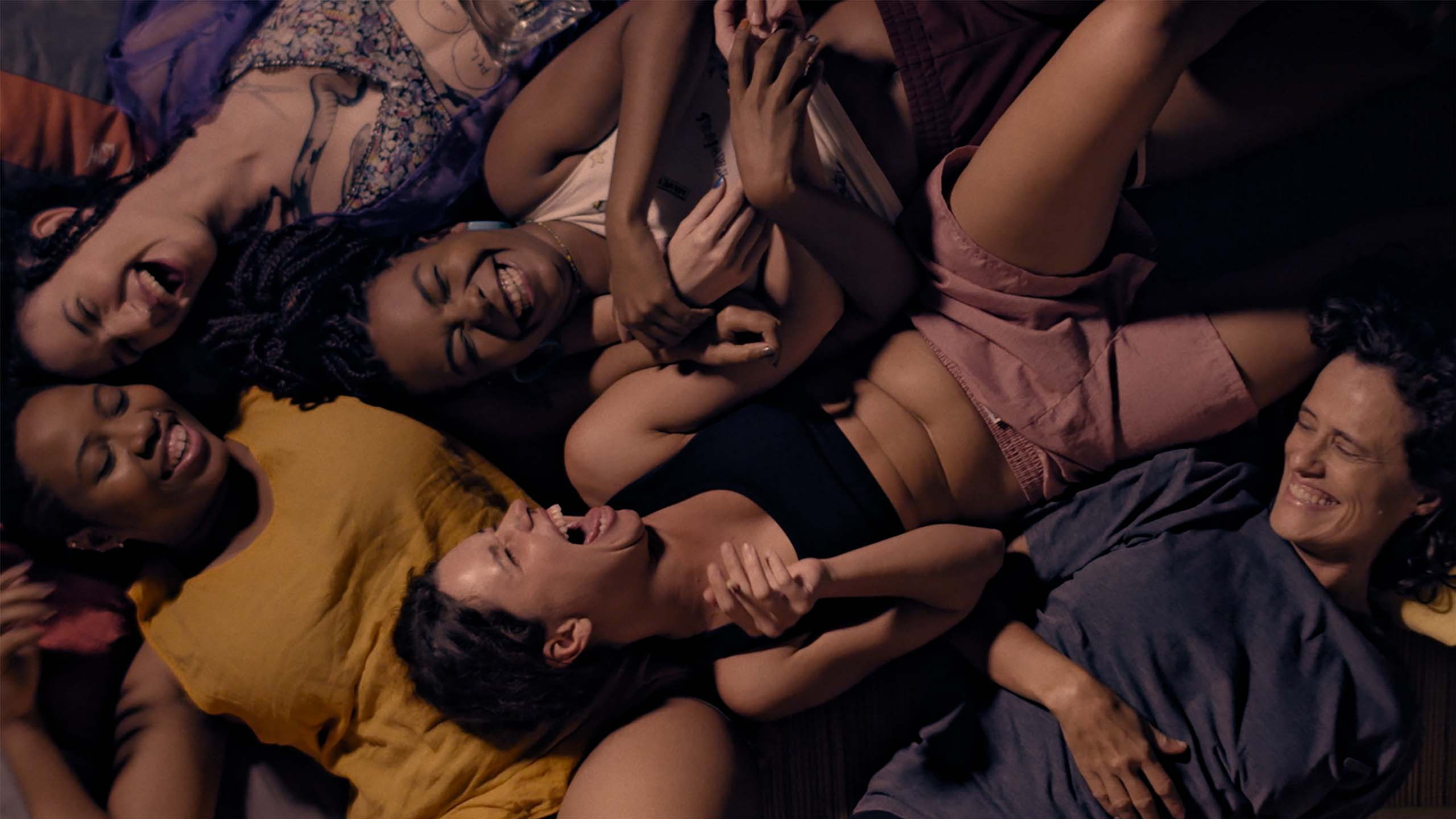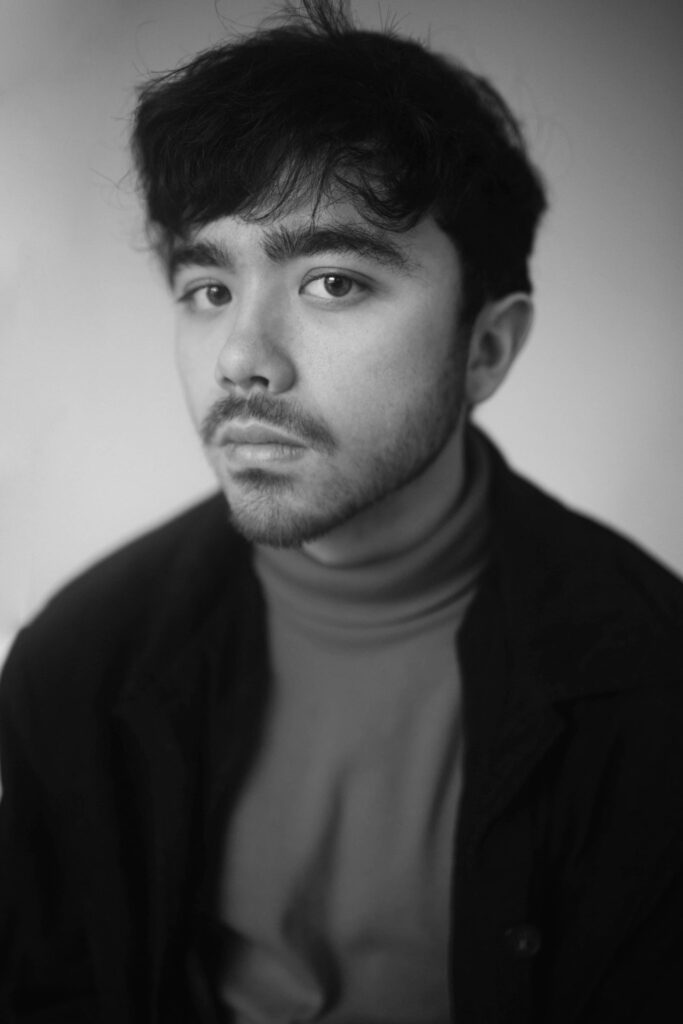
04 Feb Sundance Shorts: Five Surprise Standout Films
BY AARON HUNT
Sundance 2022 debuted some surprising films among otherwise conventional indie fare. But the festival’s better selections can feel out of place. Modern-day ethnographies like Jihad Rehab contradict correctives like Listen to the Beat of Our Images, which fills the lacuna of native historical perspective in a colonialist archive on the modernization of Korou. Focusing on excellent exceptions like the latter, this article highlights the five films I believe to be the strongest in this year’s standout short film program, within the overall context of the festival and its recent controversies.
Chief among those, Sundance saw social media backlash this year for platforming Jihad Rehab, whose white director, Meg Smaker, aimed to “humanize” four Yemeni men unlawfully detained at Guantanamo Bay, and then moved to the Mohammed bin Nayef Counseling and Care Center for “rehabilitation.” While Muslim and Arab documentarians upbraided the film’s Islamaphobic framing, reviews for the film have been mostly optimistic–Tomris Laffly called Smaker’s field work “courageous.” Though writers Abby Sun, Assia Boundaoui, and Anthony Kaufman properly took the film to task in Filmmaker and Documentary magazines, it took until just before the end of the festival for major trade publications The Wrap and Variety to acknowledge the backlash, but only by giving Smaker platforms to defend herself. Another Sundance feature, Tantura, a documentary wherein a Zionist filmmaker, Alon Schwarz, coaxes Alexandroni soldiers (who he has called the “creme de la creme” of Israeli society) into confessing to the massacre of Palestinians at Tantura, also came under fire on social media while critics raved. Detractors refused to celebrate the overdue confession of an atrocity Palestinians have condemned from the beginning, while critics did precisely that. Such patterns suggest that Sundance and the mainstream publications covering the festival are largely disconnected from a significant portion of their audiences. While many people on social media are offering critiques on the lens through which films are made and platformed, Sundance programmers and mainstream critics celebrate these same films. Sundance has not and will not respond to these controversies as long as the criticism remains mostly relegated to social media. Nor has the festival responded to concerns for its contract workers, who learned via Twitter that the in-person festival, their planned income for the season, had been canceled. To avoid accountability, Sundance only has to remain silent, wilfully alienating its more challenging audiences.
Sundance Shorts
Many filmmakers want nothing more than for their films to appear legitimate. This is when the borrowing of cinematographic techniques (non-1.85 aspect ratios continue to trend), actors, soundtracks, and other elements from established films can stem more from insecurity than inspiration. When emerging short filmmakers have access to significant resources, they have the option and thus the temptation to replicate creative choices that excited them in other films, but without the conscious motivation or unique intuition that led the original filmmaker to make that choice. This is an issue for some Sundance films, but others reappropriate more effectively, like Starfuckers’ use of the “Lee Harvey Oswald” track from Jackie, or the documentary feature We Met in Virtual Reality’s flipped use of the original score from Eighth Grade–in the latter, the score is cautionary and skeptical of social media’s effect on mental health; in the former, the same score celebrates non-judgemental social environments in VRChat.
Elsewhere, there is a trend haunting short documentaries–humorless, sentimental “introductions” to myriad marginalized communities, families, and individuals. With slow motion, participatory narration, and intrusive soundtracks, these films intensely stylize people’s lives to “uplift” them. But this cumulative aesthetic says, more than anything, “look how human they are,” as if the person/people in question hadn’t lived a day until the camera turned on.
But amid the controversies and problematic trends, there are plenty of great surprises in the Sundance shorts lineup—new and unique voices, and welcome, growing regulars. Below, I’ve listed what I believe to be this year’s festival’s five best short films.
A Wild Patience Has Taken Me Here (Short Film Special Jury Award: Ensemble Cast)
“In my days, we didn’t kiss people in the street or do whatever we wanted. It really was another time.” Vange (Zélia Duncan), a middle-aged butch, muses to the four young queer women she stumbled into on her night out. One of them, Angela (Lorre Motta) replies, “Isn’t this your time?” The unlikely crew loses track of the hour as they compare their experiences growing up queer in Brazil, and eventually decide not to let the chance moment pass–they record these ruminations on camera.
In writer/director Érica Sarmet’s second short film, A Wild Patience Has Taken Me Here, they find the enviable and uncharted zone between intuition and intention. Their camera remains in the right place at the right time, their ensemble cast is across the board undoubtable, and even their visual effects and mixed media lend to the film’s beaming life and vitality. Sarmet attains the chance quality of lightness that can’t be calculated, and only comes along once in a while.
Distribution/Sales: Freak Independent Film Agency (International festival distribution only)
The Headhunter’s Daughter (Short Film Grand Jury Prize)
Lynn (Ammin Acha-ur) hopes to connect with her father (Pablo Quintos), credited only as “The Headhunter,” by singing a song for him in a contest aired on live-television. But when she arrives at an eerily empty Baguio saloon, the host tells her not only that the show won’t be broadcast live, but that it still has to be cut together and pitched to networks. The chances of Lynn’s melodic signal reaching her father thus slim dramatically, but filmmaker Don Josephus Raphael Eblahan plays this slow melancholy for laughs (at the expense of the host’s rudeness). Throughout, the director maintains a feeling of ironic lassitude that pairs well with the original country music (created by Eblahan and Acha-ur). Some native Igorots made American cowboy fashion, kinobouyan (toughness and resourcefulness), and music into their own, perhaps giving to country the same “bamboo murmorousness” that Paco Texeira (a musician in Nick Joaquin’s The Woman Who had Two Navels) says Filipinos gave to Jazz. In Baguio saloons, one might see people dancing Kankanay style to country music. But Eblahan empties his saloon, and disembodies the TV show host, who is only heard off screen, to elicit isolation and disconnect. Despite Lynn’s audition not broadcasting, she may long to connect with her father so completely that her song travels spacetime on its own airwaves to meet him metaphysically—suggested by a direct cut from her performance to him looking up at pouring rain as if he’s heard something from the other side of the mountains. Finally, Eblahan wraps this earthbound, Cordilleran Highland tale in surprisingly surreal, digital FX–a false, starry sky, and an animated bonfire–making for a world that feels a little more lonely and magical.
Distribution/Sales: Premium Films (International sales only)
Makassar is a City for Football Fans
In Khozy Rizal’s Makassar is a City for Football Fans, clammy boys bond over an aggressive devotion to their local football club, PSM. As in many young, all-male friend groups, this one polices itself, punishing behaviors deemed beyond the possibilities of a narrow definition of masculinity. When the boys aren’t talking about football, they’re talking about sex, although they seem to have little of it. They cat-call women, use homophobic slurs, and numb each other with insults. Afif (Atdriansyah Arishmunandar) is suffocating in this vicious circle, unable to be himself–only able to imitate behaviors he knows they’ll reward. He hasn’t come out to his peers yet, and it seems unlikely that they’re capable of giving him the space for that. But after a night of ludicrous, shirtless dancing with each other, Afif shares a tender embrace with Sakti (Muh. Saleh Hasanuddin) while the others sleep just beside them. Much of Rizal’s film is very painful. With painstaking detail, he depicts how heteronormative friend groups can atrophy from unremitting microaggressions.
Listen to the Beat of Our Images
In voiceover, a young Kurussian woman remembers hunting in a forest at night with her grandfather. “I close my eyes and remember this place that no longer exists,” she says over black leader (a blank length of celluloid film, except for specks and discoloration). In 1964, the French installed the Guiana Space Centre in Kourou, displacing its natives (giving them a few months to “leave from where they had lived generations”) and altering the land. Soon, a city mushroomed here, and the Europeans brought their cameras to remember the geography in their own image. Co-director siblings Audrey and Maxime Jean-Baptiste arrive at an affecting thesis in this hybrid archival documentary Listen to the Beat of Our Images. Missing hunting trips with her grandfather, the young narrator concludes, “I was thinking of this infinite darkness. But now it’s an image. Just an image. As if it never existed.” The directors fill the film with plain frames of black leader–these are our moments of respite, which we also come to associate with the dark forest that once comforted the narrator, between the inherent violence of the archival images. The narrator is fictional, based on audiovisual archives from the National Center for Space Studies–a means of inserting a regenerative throughline into the gaps of this recorded history. The French’s construction of the Guiana Space Centre (to replace the Hammaguir Space Center in newly independent Algeria) wreaked immeasurable destruction on the unrecorded histories embedded in the land and native peoples. I’m reminded of a Frantz Fanon quote from Wretched of the Earth—“A hostile, ungovernable, and fundamentally rebellious Nature is in fact synonymous in the colonies with the bush, the mosquitoes, the natives, and disease. Colonization has succeeded once this untamed Nature has been brought under control. Cutting railroads through the bush, draining swamps, and ignoring the political and economic existence of the native population are in fact one and the same thing.”
Socrates’ Adventures in the Underground
In Aria Covamona’s self-recorded artist introduction, the eccentric artist feigns ill-prepared, staring into the screen for an awkward moment before beginning their speech. They then show a scene from their film, Socrates’ Adventures in the Underground, improvising new dialogue over their dada-like cutout characters. But in the actual film, Covamona built their voices and dialogue from fragments of 30s-60s Chinese and American films (which make for head-spinning cultural and historical polarities) available in the public domain, plus Delia Derbyshire’s Arabic Science and Industry. Their artist intro stands out, as does their film, which they describe as a “marxist-leninist-maoist revision” of Plato’s Allegory of the Cave. Talking mice drag Socrates through the underground and past freak-depictions of early 20th-century, Western psychoanalytic thinkers, like a crowned Freud with skin decaying around his mouth in a heart shape. Elsewhere in the underground, a cracked-face porcelain doll declares it “lost the script”—does it mean the script of Covamona’s film? Eventually, the doll finds it, a wrinkled sheet with child-like scrawl and Chinese characters only visible under a magnifying glass. But it is perhaps too late for the film to recover and find its rails–the doll more or less shrugs it off. So too, the viewer must shrug off logic, surrender to the film’s postmodern scramble, and embrace the laughs if they care to make it out from under ground. And if you missed it at the festival, you can still experience the ludicrous trip yourself. Covamona got away with uploading the film to their Youtube channel (full of gold) in November of last year.

aaron e. hunt is an endeavoring filmmaker, cameraperson in doc/narrative production, film & culture critic, and the vice president and editor in chief of Dedza Films, a short film distributor for emerging filmmakers.

Sorry, the comment form is closed at this time.